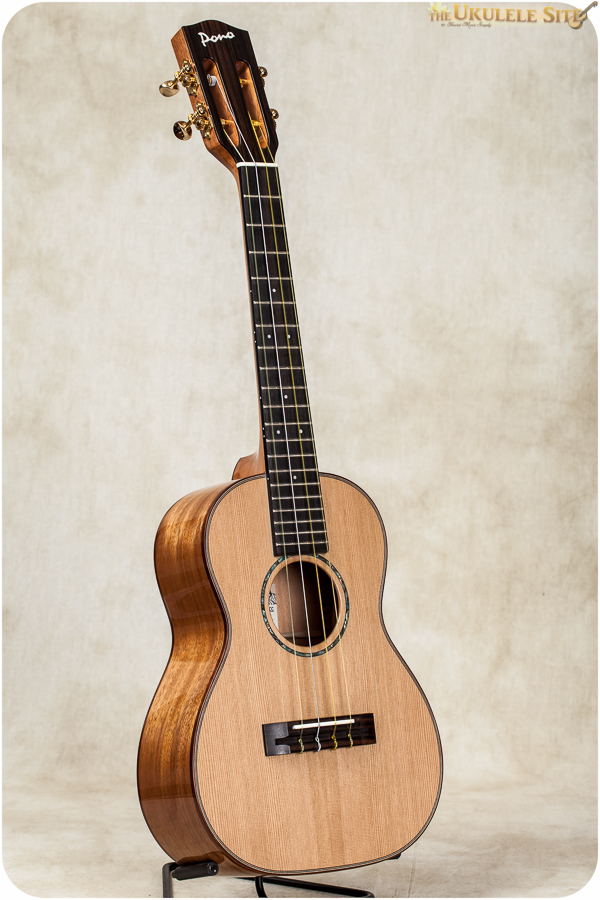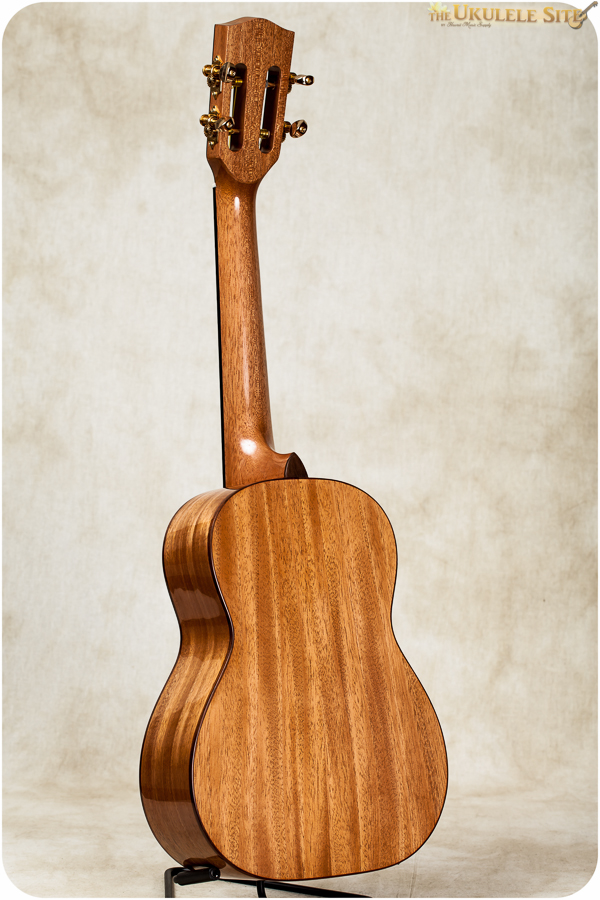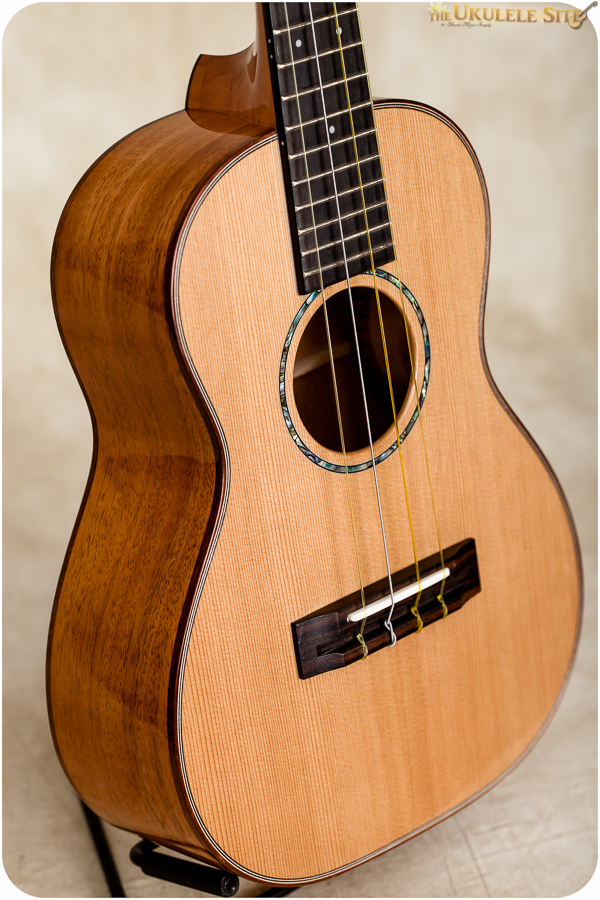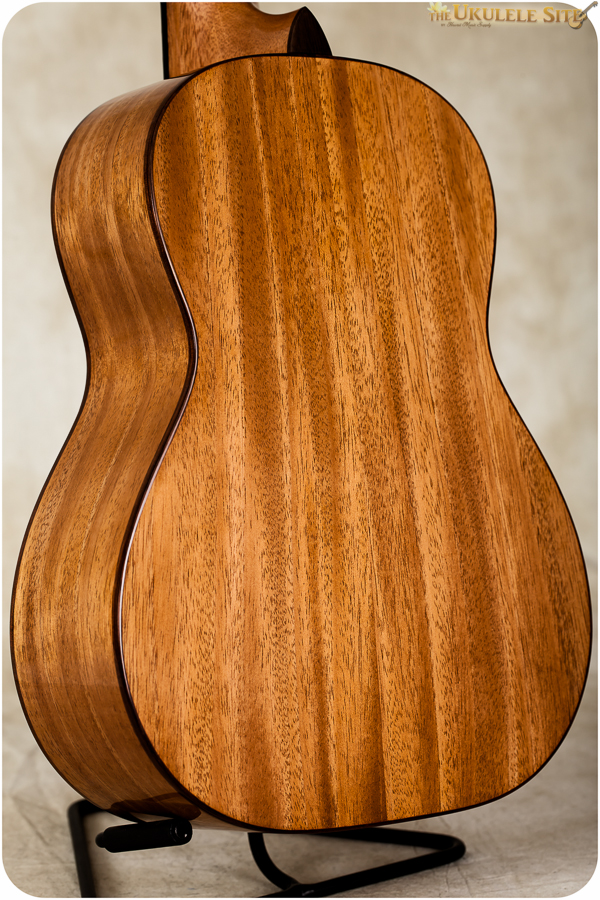And I wanted to get REALLY into it, too. I initially dreamed of getting ukes from the four K’s (Ko’olau, Kamaka, Kanile’a, and KoAloha) that are made here on Oahu, but they are PRICEY, especially when you want one of each.
Surely there is a level of uke craftsmanship that lies between budget instruments and ukes the likes of Lyle Ritz, Daniel Ho, or Corey Fujimoto would play.
And it turns out there is! Several of the island’s manufacturers have more budget-conscious models that are made overseas and then shipped in. They obviously aren’t American made and might not feature the same fantastic appointments, but in the case of Pono Ukuleles at least, they managed to make a professional instrument for the working stiff like me and they are great.
Pono is a subsidiary of Ko’olau. John Kitakis started Ko’olau with the idea of making the best ukulele regardless of price “and then starved for twenty years,” but eventually Ko’olau became the success it is today – still holding to strict quality standards and making the best ukes they can with such attention to detail that the average wait time is around eight months (as of this writing). The company decided to try to incorporate Ko’olau’s quality standards into an import line and came up with Pono.
Pono ukes feature all solid woods, which is a big deal. Laminate woods like what are used in a lot of budget-focused ukes do a good job of fighting temperature and humidity changes, but they’re tone is fairly stagnant – what you hear on day one won’t be TOO different compared to what you hear on year five. Solid woods, on the other hand tend to open up or “breathe,” and notes bloom. Basically, solid wood instruments sound better and better the more they’re played. They are more finicky with temperature and humidity, but either a room humidifier or keeping it in a case with a humidifier will do wonders to keep your uke in good condition.
Pono ukes also have no plastic parts. I have a Gibson Les Paul that I have brought to eight states and on TONS of plane rides and the one thing that would always be guaranteed is when I landed and the case came up the baggage carousel the pickup selector ring would be in pieces. It couldn’t take the cold, but I never minded too much. It was largely just aesthetics and it’s not an expensive part. But it also wasn’t the tuning machines, the nut, or the bridge. When my Les Paul’s plate would break, it didn’t impact my playing, but if a critical part of the guitar broke because it was plastic, my playing would have suffered (and the repair would have been more expensive). Now think about an uke and try to name a superfluous or unnecessary part. They’re made to be light and functional instruments, but they should also be as durable as possible, so when I found out it had no plastic, I felt a lot better about the quality of materials and their durability.
The model I’m reviewing is among the top of Pono’s line and it comes loaded to the brim with cool stuff beyond the solid wood and lack of plastic. For one thing, it has a slotted headstock which strikes me as both traditional and a huge pain for the instrument maker. It just looks so cool, though! And it’s still able to fit inside the clamp of my Planet Waves NS Micro Tuner, but just barely. I had a scare there for a bit that I might have to tune by ear like a savage, but was able to barely fit it on. If this is a concern for you, you can buy one with a thinner headstock with tuners on the back, not the sides like on this one. I did run into a slight issue with the second tuner sticking a bit, but that would be an easy fix and it didn’t ruin the tuning, it just requires more physical effort.
The neck also features my favorite part:
See, most ukuleles have a flat fretboard, which makes sense when you think of its heritage. And flat fretboards would certainly be easier to manufacture. But Pono took another feature from Ko’olau and included a radiused fretboard similar to a guitar.
For those who play guitar and are thinking about ukes, you kind of forget the fretboard is flat after a while and everything is fine until you play an uke with a radiused fretboard and then it just feels right and you caught what was missing this whole time. And Pono insists that this isn’t a huge development, but I politely disagree because it makes chords about a billion times easier to play (I did the math) and it feels significantly more natural for a guitar player like myself.
Honestly, it made me question the likelihood that I would pursue getting any more flat fretboard ukes, even if they are made by the Four K’s. Right when I played this one, my mind was pretty much made up that the playability trumped the coolness of the brand and I became a huge fan of Pono since it just felt right in my hands.
But I’m not done waxing poetic about this uke because it also has a passive pickup system on it. Ukes generally come in three flavors electronics-wise: no pickup, passive pickup, or active pickup. You can tell if it has an active pickup because they generally have controls somewhere on the uke which give you greater control of your amplified tone, but may sacrifice a bit of natural acoustic tone (and require a battery). Passive pickups have less onboard control, but are less invasive to the uke’s construction and there is no battery to worry about. With all this in mind, the passive pickup seems like a good compromise and the uke sounds good plugged in, even through an iRig HD into an iPad running JamUp Pro, which wasn’t specifically meant for ukes.
I’ve had this uke for a little while now and keep it next to my couch, never more than an arm’s reach away and it turns out that is a really great place for it since I’m constantly reaching for it and playing it. The tone is sweet and, while it would be silly to say it makes me a better player, it doesn’t hinder my playing in any way and let’s me play as well as I possibly could. I’ve written more songs in shorter time from the constant playing and every day that goes by I love it more and more.
But this is a loaner uke, which means I have to give it back. And, as much as that bums me out, I’m excited because I know exactly what kind of uke I want to get and it’s the updated version of this one. Some small aesthetic changes were put into place like rosewood binding for greater contrast, and I would prefer an uke with a cutaway, but that’s just me being me – players significantly better than me don’t need cutaways.
Or I could be tempted by the cedar-top, ebony back/sides slothead uke that Pono also sells. Honestly, they make some killer-looking ukes and there’s more than a couple that are tempting.
In the end, as I look at this uke, I can’t help but be impressed at Pono’s ability to manufacture a professional-grade ukulele in Indonesia that ticks all the boxes of what most people look for and then adds some like the radiused fretboard and at a price that, while not the cheapest, you can definitely save up for and walk away with an instrument that you’ll be proud to play and hand down to future generations.





Comments 6
Nice review. I am quite impressed with Pono ukuleles. They give you a lot of bang for the buck. Even their base models are impeccably made. They look great. Plus, they offer a lot of models and configurations. Most importantly, they all sound terrific.
Great review, I have a very similar Pono with the Rosewood back and side and the side sound port. The neck on these Tenors is great. I am a bass player by training and trade so I am used to a radiused fingerboard. Once you go from a flat board to the radiused fingerboard on this tenor you don’t want to go back, it makes a world of difference.
It seems that, contrary to the headline, this review is actually of the cedar-topped acacia model, not the cedar-topped mahogany. A fine review, nevertheless, and a model I will be seriously considering when it comes time for me to upgrade my tenor uke. Beautiful looks and sound from the video.
I’ve been spending many happy hours looking through the site trying to pick my next, last and only ukulele to replace my beginner uke. These reviews certainly add to the enjoyment of research.
Although this was not the Ike I purchased, the reviews and phone conversations were more than helpful on my purchase. Thanks HMS
How much?